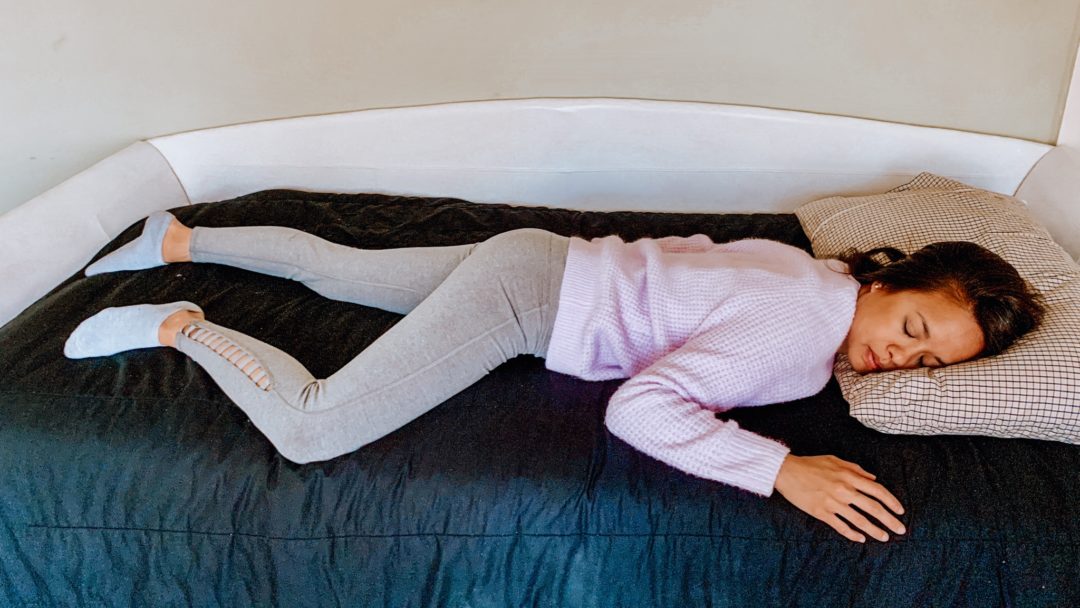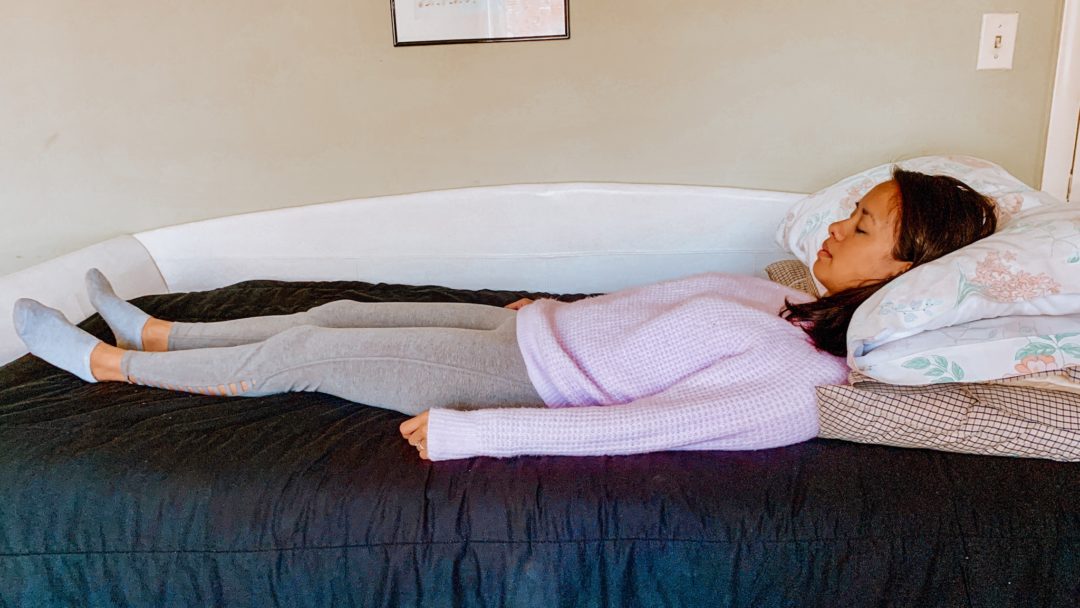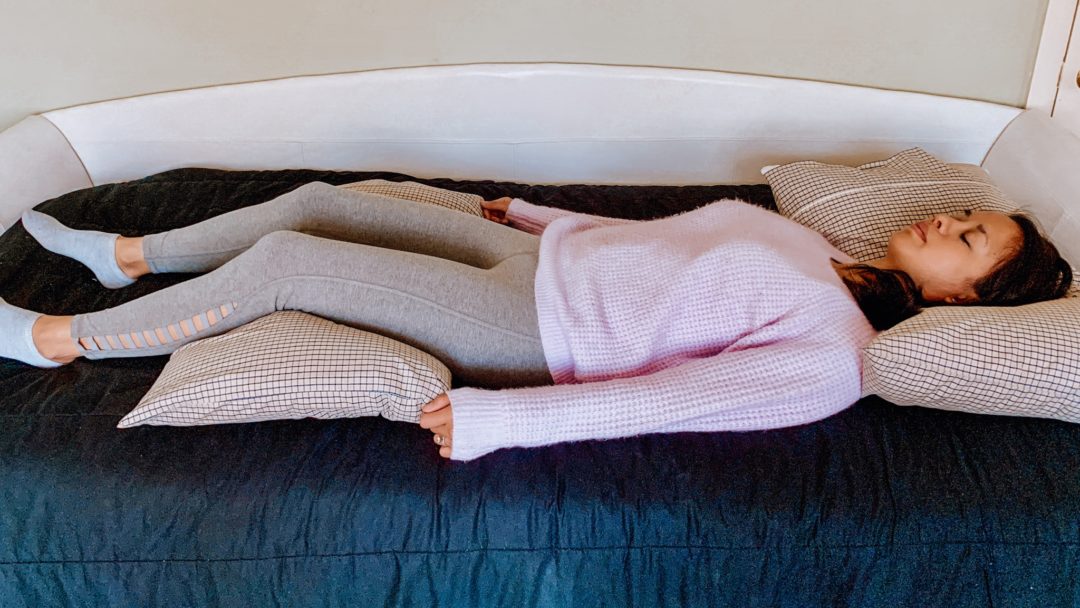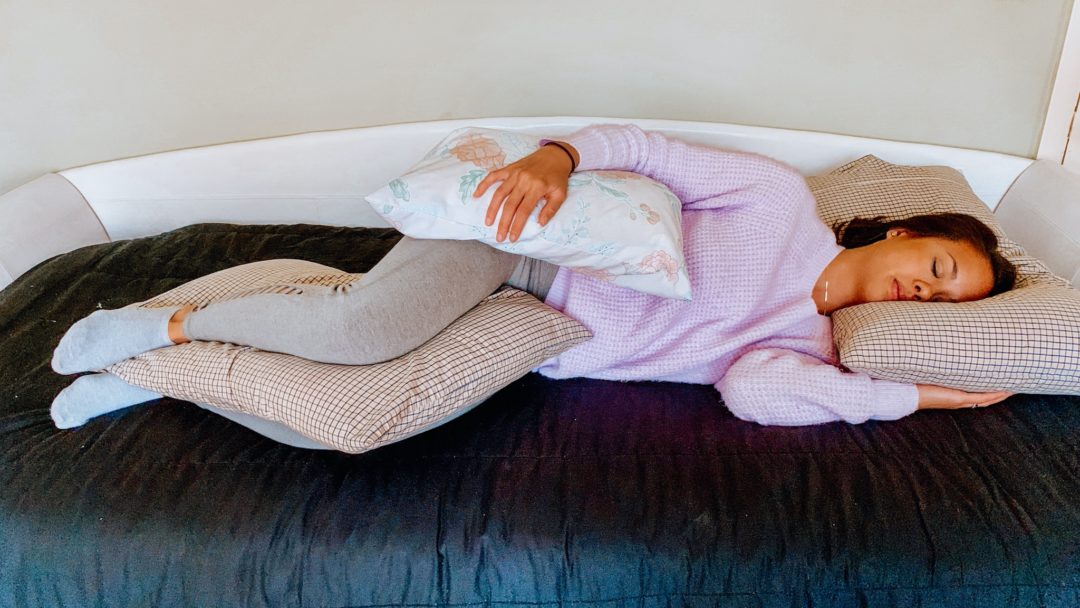Do you suffer from neck and/or back pain and have a hard time finding a comfortable sleeping position at night? Or do you find yourself waking up with even more pain than you started with the night before? Sleep positioning is crucial to having a good night’s sleep, and we often have no idea how to position our bodies in an ideal way to allow for more restful evenings. In general, it is important to preserve the natural curves in our spine and to maintain neutral alignment in our legs, pelvis, torso, and arms. Of course, it’s impossible to control what our bodies do during the night while we are sleeping, but setting up well for sleep can have a dramatic impact on the quality of our sleep.
Here are 6 tips for a more restful night’s sleep:

- Avoid sleeping on your stomach. Sleeping on your stomach can enhance neck and back pain in a number of ways. Since you have to turn your head to one side in order to breathe, stomach sleepers become prone to increased neck pain because of excessive neck rotation to one side that can cause muscle strain and added compression throughout the cervical spine. In addition, the low back is placed into hyperextension, which can contribute to added compression in the lumbar spine.
- Pillow size matters. I encourage you to test out different pillows to see which ones work best for you – one size does not fit all! If your pillow is too big or puffy, or if you sleep with more than one pillow underneath your head, your neck will be excessively flexed forward if sleeping on your back or will be bent up to one side if sleeping on your side. If kept in these positions for too long, you become prone to muscle strain and added cervical compression. On the other hand, if your pillow is too flat, then your neck might go into excessive hyperextension if lying on your back, or too much side bending without proper support if lying on your side. Instead, look for a pillow that keeps your head and neck in neutral alignment so that they are in line with the rest of your spine.
- Speaking of pillows, ensure that your neck has proper pillow support. Whether you are sleeping on your back or on your side, make sure that your pillow is tucked into the curve of your neck so that every part of your neck is fully supported. If you see a gap or space in between the pillow and your neck, it means that there is no support underneath that specific part of your neck.
- Sleep on your back? Try propping a pillow underneath your thighs. Placing a pillow underneath your thighs helps to unload and decompress the spine and also allows for a slight bend in your knees while you sleep at night. These slight adjustments can provide moderate relief to your joints.
- Sleeping on your side? Place a pillow in between your knees and underneath your top arm. By providing more support to your legs, arms, and torso, you are helping to align your body in a more neutral position even though you are in a side-lying position. A pillow in between bent knees keeps your legs and pelvis aligned and reduces the risk of excessive rotation in your torso and pelvis while you sleep. A pillow underneath your top arm keeps it more in line with your torso and minimizes the risk of your top shoulder being pulled forward at night.
- Avoid curling up into a fetal position when sleeping on your side. While this might feel comforting at first, this position may eventually cause increased strain to your back and neck since both areas are being flexed forward. Instead, keep your knees slightly bent (don’t pull them up too high towards your chest), make sure your head is in line with the rest of your body, and slightly tuck your chin in so that the back of your neck is lengthened.
Discover unparalleled care in PhysiologicNYC!
Try these tips and if you’re still feeling restless and in pain, contact us by phone or by filling out the form below for more Physical Therapy tips and telehealth based solutions specific to you and your needs:


